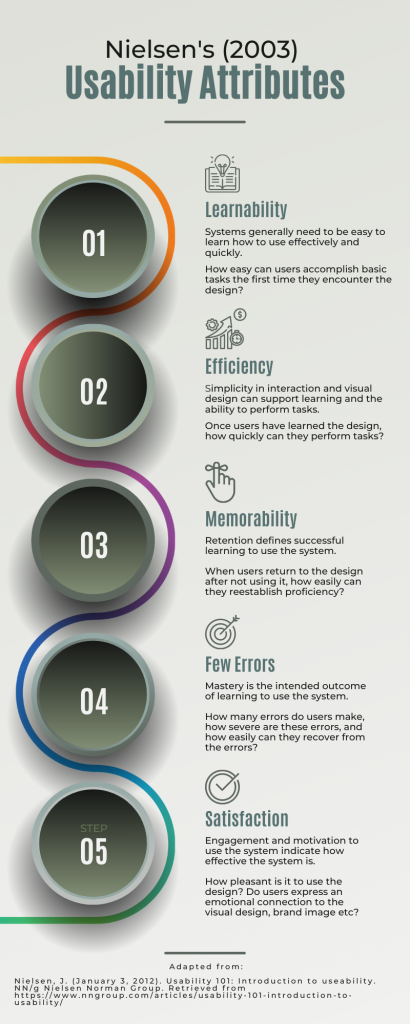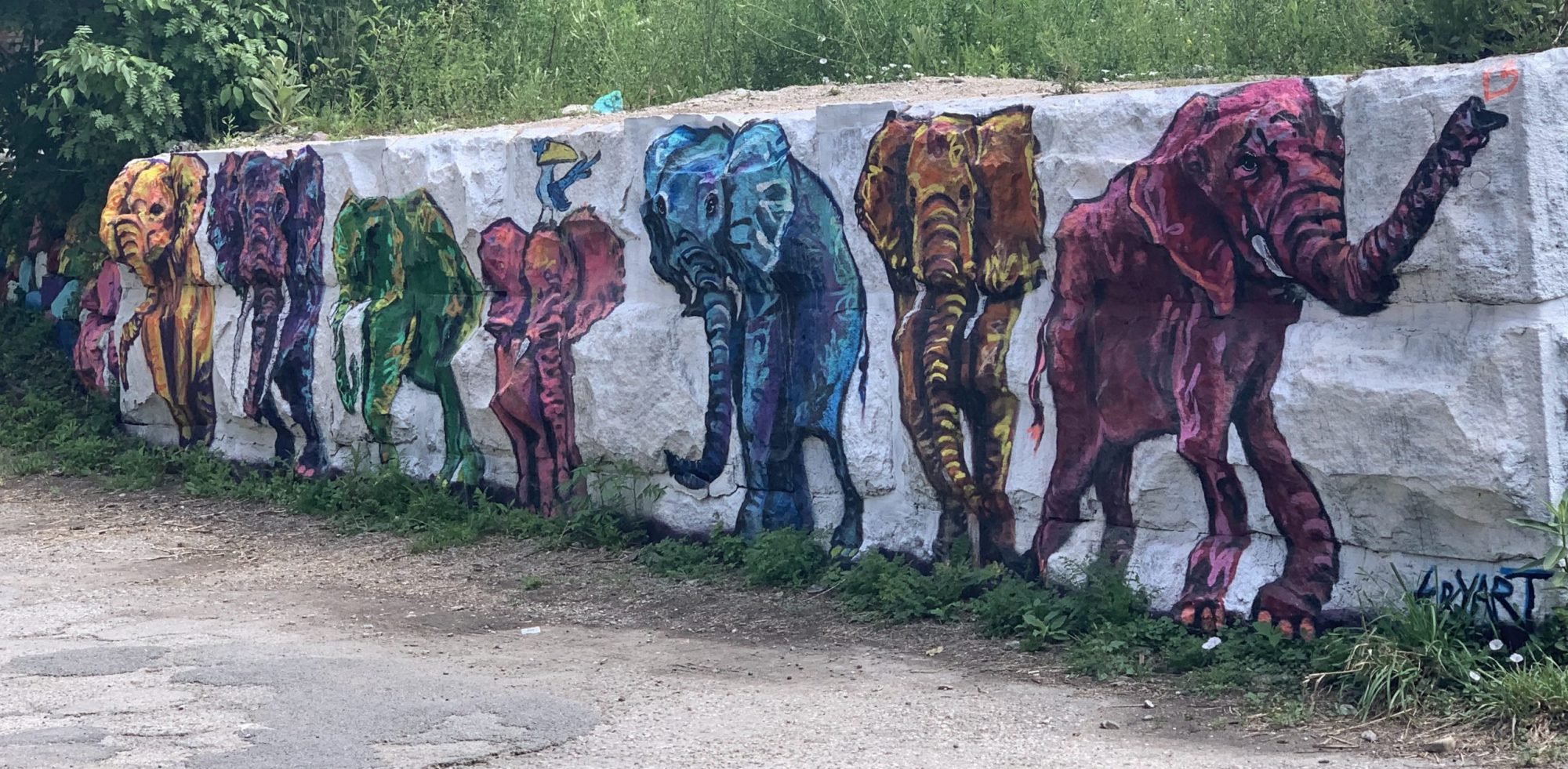Having a background in product management, I frequently remind myself that the answer to most of our questions lies not in our opinions but in the consumer’s voice. Ramorola (2013) states there is little evidence regarding the integration of technology nor information on how to plan and implement technology effectively to support learning in the corporate world. I believe technology if effectively designed, holds promise for deep and meaningful learning.
Including Mastery in Usability
The concept of usability, born out of human-computer interaction (HCI), helps us to understand the quality of interaction between a user and a system (Issa & Isaias, 2015). For my context as an educator in the corporate and healthcare world, CSA-ISO definitions are most often applied. In this case, usability must enable users to achieve goals effectively, efficiently, and satisfactorily (OBP, 2018). Being tasked with supporting the development of mastery for a given task where learners are often digital immigrants, retention, interaction, and the ability to easily access help are additional areas that round out my definition of usability. To that end, Neilson’s (2003) definition, as outlined in Figure 1, supports the idea of my broad definition of usability.
Figure 1: Nielsen’s (2003 Usability Attributes

Needs of the neurodiverse
According to Lim et al. (2019), understanding workplace learning based on neuroscience provides new perspectives and insights and may result in more effective learning designs and delivery. Frustration leads to anxiety, reduced learning ability, and attrition (Sindhu & Basha, 2017). Successful knowledge transfer through workplace learning is not easily achieved; at best, only 15% of the learning during training gets transferred (Banerjee et al., 2016). The ability to learn at their own pace can be looked at favourably by employees who are busy with their job activities; however, there needs to be a clear set of realistic expectations regarding deadlines to reduce stress and frustration.
What is not considered by existing usability definitions and something that is an essential aspect of my definition of educational usability is the concept of neurodiversity which I would define to include learning disabilities, ASD, ADHD, and anxiety disorders, all of which can impact the success of the user and the ability to conclude something is usable.
When usability goes wrong
There is nothing worse than being told your baby is ugly. Ruth’s task of configuring the computer to the printer is a perfect example. The difficulty she was experiencing even after utilizing all the materials at hand was resolved when the observer admitted Ruth’s task was impossible as they had not designed ‘DNS’ with the appropriate ‘socket’ (Woolgar, 1990, p. 87). This highlights a breakdown of when the project scope was developed from a product management perspective. The project charter (a formal document that describes your project in its entirety) should have had a question about auxiliary devices that may be used; thus, all ‘sockets’ needed would have been identified.
The second example is one that was a theme throughout the article; understanding of the intended user. Developing and understanding the user(s) persona(s) is one of the early requirements of successful product development. As Woolgar (1990) states, “one needs to adequately represent the views of any one entity in virtue of how it relates to and differs from others in the matrix” (p. 66). Developing a clear user persona that everyone on the project team can refer to or talk to will help to ensure all observers use the same lens and do not impart their beliefs or biases upon the user. As noted by Woolgar (1990), there was recurrent commentary regarding the subject’s performances and frequent attempts to empathize with the subject (p. 85), which should not occur during a usability study and would be less likely to occur by ensuring all observers have a clear understanding of the user characteristics.
Different, yet the same
In the most simplistic terms, both Issa and Isaias (2015, p. 29) and Woolgar (1990) summarized product development and assessment principles that have been in practice for decades, albeit under different names based on the market or product type. Like Pragmatic Marketing, Issa and Isaias (2015, p. 29) strongly emphasize understanding the user and designing from their needs, knowing their opinions are irrelevant. Conversely, Woolgar (1990) postulates that users lack knowledge of their own needs or commercially successful system features, thereby needing the system architects to develop products configured upon future needs.
References
Banerjee, P., Gupta, R., & Bates, R. (2016). Influence of organizational learning culture on knowledge worker’s motivation to transfer training: Testing moderating effects of learning transfer climate. Current Psychology (New Brunswick, N.J.), 36(3), 606-617. https://10.1007/s12144-016-9449-8
ISO Online Browsing Platform (OBP). (2018). ISO 9241-11:2018: Ergonomics of human-system interaction — Part 11: Usability: Definitions and concepts. Retrieved September 16, 2022, from https://www.iso.org/obp/ui/#iso:std:iso:9241:-11:ed-2:v1:en
Issa T., Isaias P. (2015). Usability and human computer interaction (HCI). In Sustainable design: HCI, usability and environmental concerns (pp. 19-36). Springer. https://doi-org.ezproxy.library.ubc.ca/10.1007/978-1-4471-6753-2_2
Lim, D.H., Chai, D.S., Park, S. and Doo, M.Y. (2019), Neuroscientism, the neuroscience of learning: An integrative review and implications for learning and development in the workplace, European Journal of Training and Development, 43(7/8), pp. 619-642. https://doi.org/10.1108/EJTD-03-2019-0033.
Neilsen, J. (2003) Usability 101: Introduction to usability. Alertbox.
Ramorola, M. Z. (2013). Challenge of effective technology integration into teaching and learning. Africa Education Review, 10(4), 654-670.
Sindhu, P., & Basha, S. A. (2017). Impact of depression, anxiety and stress on academic achievement among engineering students. International Journal of Indian Psychology, 5(1) https://doi.org/10.25215/0501.058
The Pragmatic Framework (n.d.). Pragmatic Institute. Retrieved September 8, 2022, from https://www.pragmaticinstitute.com/framework/
Woolgar, S. (1990). Configuring the user: The case of usability trials. The Sociological Review (Keele), 38(1_suppl), 58-99. https://doi.org/10.1111/j.1467-954X.1990.tb03349.x

